See the History of Ticker-Tape Parades Beneath Your Feet on Broadway’s Canyon of Heroes
Uncover the history of NYC's confetti-covered parades that have been running since the 1880s!


Chinatown and Little Italy may be the first locations that come to mind when non-New Yorkers think of New York City’s diversity and immigrant history. However, there were dozens of other immigrant groups that migrated and clustered into various neighborhoods, forming smaller ethnic enclaves that contribute to New York City’s identity as a “melting pot.” The Endangered Language Alliance’s NYC Language Map notes over 700 different languages spoken across the five boroughs and the surrounding metropolitan area. As of 2019, about 37% of New York’s population, or about 3.1 million residents, were immigrants from almost every country in the world. Untapped New York took a look at 20 of the most populous (and popular) ethnic micro-neighborhoods across the five boroughs, many of which only developed in the last 2 to 3 decades.

Although Washington Heights saw many Irish immigrants in the early 1900s and European Jews escaping the Nazi regime in the 20th century, the neighborhood witnessed an influx of Dominicans after the 1960s. Puerto Ricans were previously the most populous Latino group in the neighborhood, but the number of Dominicans and Cubans later overtook them. Many Dominicans immigrated to the U.S. during the regime of Joaquín Balaguer, defined in part by high unemployment and poor economic conditions.
Washington Heights shows its tradition proudly: Dominican Republic flags hang in apartment windows; Spanish is spoken at establishments on every block; and street stalls sell food and drink along major corridors up through neighboring Inwood. Mixed with spoken Spanish is the sound of Bachata, a musical genre originating from the Dominican Republic.
Here, you’ll observe families and friends congregating in the streets and dancing in the nearby parks. It is a neighborhood of families and neighbors whose culture resonates throughout. Like many neighborhoods, the Washington Heights and Inwood areas are feeling the pressure of rising real estate prices – particularly with its strong stock of pre-war apartment houses.
Broadway serves as Washington Heights’ main commercial artery with a number of mom-and-pop specialty shops, Dominican eateries, and more recognized chain retailers. Among the numerous eateries, El Malecon proves to be a more popular presence in the neighborhood, specializing in authentic Latin cooking. El Malecon features traditional Dominican dishes such as mangu, or mashed green plantains, and sancocho, a Dominican-style stew. Other popular Dominican eateries in the neighborhood include La Barca Restaurant, La Casa Del Mofongo, and El Conde Restaurant.

Little Senegal, or “Le Petit Senegal” to many Francophone locals, is home to African immigrants from Senegal, the Ivory Coast, Ghana, Guinea, and other West African countries. It is centered around 116th Street between Lenox Avenue and Frederick Douglass Boulevard in the middle of Harlem. Over the past 30 years, the population of immigrants from West African countries has slowly grown and expressed its influence in the area. This section of the city has a long and storied past, from being one of the hotbeds of the Harlem Renaissance to serving as a major site of the Civil Rights and Black Arts movements. While the vibrant African American culture is still present and thriving, the influx of African immigrants has become more apparent, particularly the prevalence of West African languages spoken, including Wolof.
New West African restaurants like Le Baobab have sprung up around classics like Sylvia’s and Amy Ruth’s. Pikine is a popular Senegalese restaurant serving dishes like thiebou djeun, a fish stew served with cassava, carrots, and cabbage. The prevalence of West African cooking extends to Central Harlem around the 130s, including Chez Maty et Sokhna and Chef Jacob. There is also a permanent outdoor market in the area named for Malcolm Shabazz, whose businesses offer everything from traditional Malian clothing to cell phone plans with discount rates to Senegal or Ghana. The neighborhood also includes a small East African presence predominantly from Somalia; the city’s only Somalian restaurant is Safari Restaurant on West 116th Street.
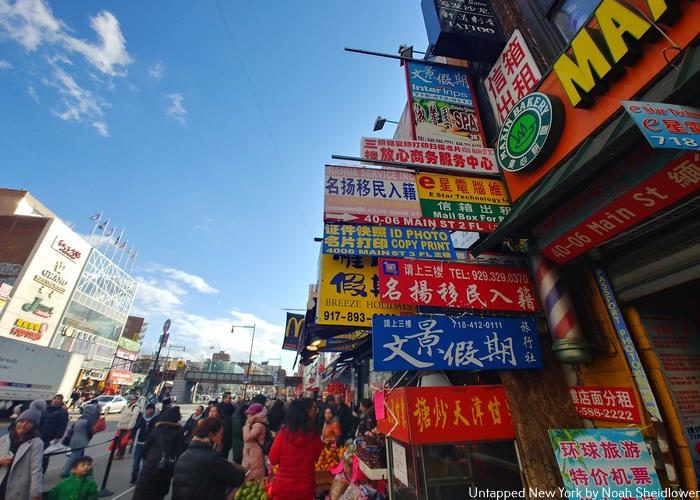
Though many know Lower Manhattan’s Chinatown for its dense Chinese population, Flushing, Queens, has a nearly equivalent Chinese presence. About 70% of its population is Asian, making it a thriving ethnic micro-neighborhood with a Chinese population that’s larger than Lower Manhattan’s Chinatown. Immigrants from Taiwan first established a presence in the neighborhood in the 1970s, though there was already a small Japanese community there. In contrast to Manhattan’s Chinatown, where Cantonese is predominantly spoken, many of Flushing’s residents a few decades ago spoke Mandarin, as well as Fujianese and Hokkien. Multiple waves of Chinese immigration occurred in the 1990s and 2000s, with a growing Northern Chinese population. The Chinese community grew alongside other Asian communities, such as the large Korean demographic that grew in the 1980s, particularly around Union Street and neighboring Murray Hill. Flushing also includes a small Indian community that has existed since the 1970s. The Hindu Temple Society of North America was the second Hindu temple consecrated in the U.S.
The heart of Flushing’s Asian community lies in Downtown Flushing, where the bustling streets and crowded markets are reflective of those in Asia. A popular destination in Downtown Flushing is the New World Mall on the corner of Main Street and Roosevelt Avenue, which prides itself on being perhaps the largest indoor Asian mall on the East Coast. There are over 100 retail shops and a huge Asian supermarket on the first and second floors. The third floor has one of the largest Chinese dim sum restaurants and banquet halls in the Tri-State area. For additional culinary recommendations, check out our guide to New York’s many Chinatowns. Some of the most popular Korean eateries in the Flushing area include Kimganae, Hahm Ji Bach in Murray Hill, and Kun Sohn Korean Noodle House in Murray Hill.
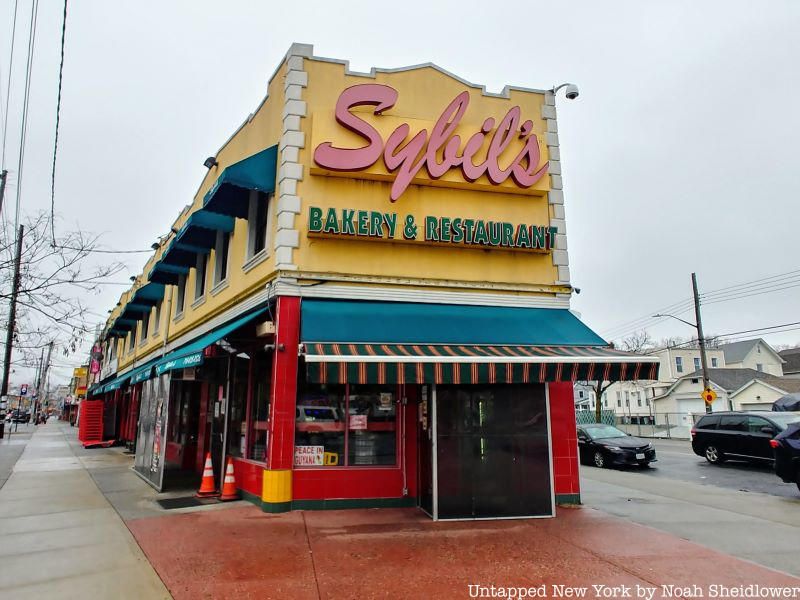
Richmond Hill houses the largest Sikh population in New York City. Since the 1970s, many Caribbean Indians have called the southern part of the neighborhood home, where one of the largest populations from Guyana resides. There are approximately 140,000 Guyanese residents in New York City, most of whom live in Ozone Park, Canarsie, and Flatbush. This makes the Guyanese-American community the second-largest foreign-born group of immigrants in Queens. During the 1970s and 1980s, there was a large wave of Guyanese immigrants, many of whom were Hindu. Over time, Richmond Hill and Ozone Park also attracted Trinidadians, Chinese, and Indians, leading to a fusion of the Caribbean with Asia.
Along Liberty Avenue, named for being the only toll-free road in the area during a bygone era, there are shops selling roti and doubles, a street sandwich consisting of fried bread and curried chickpeas topped with Caribbean spices, cucumber, coconut, and a hot pepper sauce. The food shops are interspersed with clothing stores selling fabric and traditional Indian clothing.
As diverse as its citizens, Little Guyana offers Caribbean twists on traditional Indian cooking. While predominantly Indian, you can find Caribbean, African, and Chinese food at different price ranges. Guyanese restaurants and bakeries are abundant, notably Sybil’s Bakery and Restaurant Shop where you can taste the gambit of traditional Guyanese meals, and the Little Guyanese Bake Shop which offers a variety of traditional cakes, bread, and sweets.
The neighborhood has various sit-down restaurants and street-fare stalls as well, from Caribbean-Suriname crossover to Trinidadian “bake and shark” (exactly as it sounds; fried shark on a dough bun) to Chinese-infused curry dishes. Near the larger markets, it’s not unusual to find a picnic table selling fresh peppered mangoes and melons.
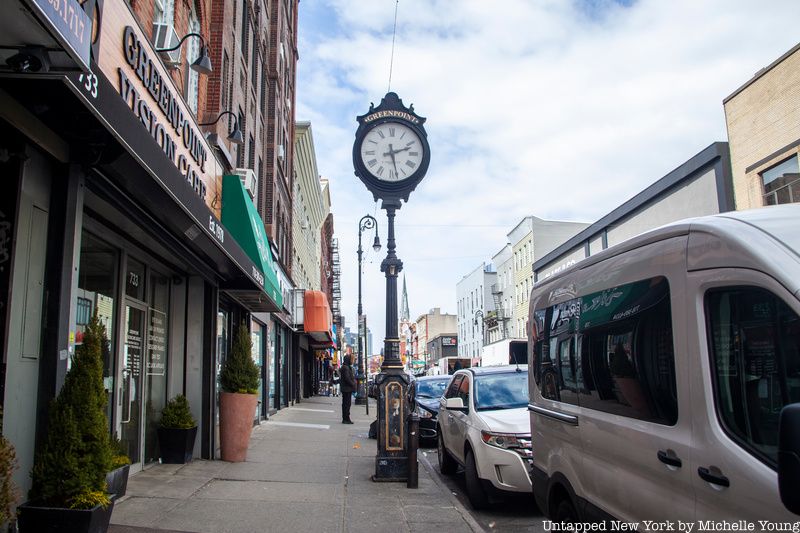
Look past the emerging counterculture and you’ll find New York City’s Little Poland in Greenpoint, Brooklyn. Though Greenpoint is rapidly developing, its rich Polish culture and history have yet to be completely expunged. Large numbers of Polish immigrants came in the late 1800s during the later period of Greenpoint’s industrialization. Many Poles came to escape religious and political persecution, including Jews leaving pogroms, as well as those looking to earn higher wages. This North Brooklyn neighborhood is home to the second largest concentration of Polish immigrants in the United States, behind Chicago.
When walking through the neighborhood, its ethnic character is evident in the myriad Polish bakeries, meat markets, and restaurants that dot Manhattan Avenue, Greenpoint’s main thoroughfare. Polish specialty shops and restaurants include Old Poland Bakery and Jaslowiczanka Bakery, both of which offer a wide selection of homemade polish pastries including babkas and apple tarts. Notable restaurants include Pierozek, Pyza, and Karczma which is known for its grilled plate with kielbasa, blood sausage, and pork shoulder. Other establishments include the Polish National Catholic Church of the Resurrection Parish on Leonard Street and the Polish National Home on Driggs Avenue, which is home to the Warsaw box office and bar and lounge. Don’t be surprised at the profusion of Polish-language newsstands and magazines that can be found in just about any deli within the neighborhood.
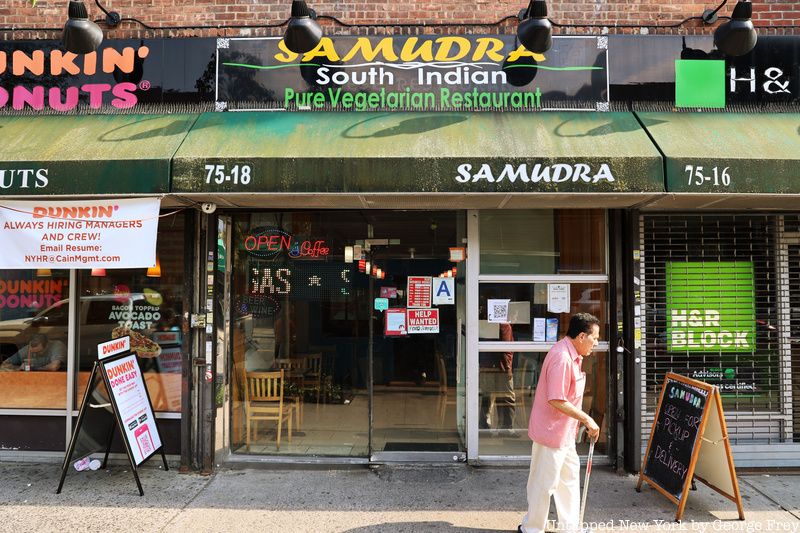
Jackson Heights is situated in the northwestern portion of Queens. Like many neighborhoods in Queens, Jackson Heights has historically seen influxes of various ethnic groups settling into the area. Prepare to be dazzled by the plentiful sight of garments, especially the colorful saris worn by women in Little India and Little Tibet. Today, some consider Jackson Heights the most diverse neighborhood in New York, if not the world. Residents of Jackson Heights claim that 167 languages are spoken within the 300 acres of the neighborhood, including many minority Indian, Nepali, and Tibetan languages.
Considering the abundant locales and eateries, Jackson Heights doubles as a global ethnic market. While walking down Roosevelt Avenue—the neighborhood’s busiest commercial thoroughfare—you’ll find Indian restaurants juxtaposed with Colombian diners that sit next to Mexican taco shops. Among the most popular Indian and Bangladeshi restaurants are Angel Indian Restaurant, Samudra Vegetarian Restaurant, and Haat Bazaar. The Butala Emporium serves as a great resort for Indian souvenirs, including its extensive selection of Indian clothing, incense, prints, instruments, Bollywood films, etc. Interspersed in the neighborhood are over a dozen Himalayan restaurants, including Nangma Restaurant with Tibetan and Nepali options, Lhasa Tibetan Restaurant, and Laliguras Restaurant.

In the northern Bronx, just above its namesake cemetery and east of Van Cortlandt Park, you can find New York City’s own Little Ireland. The neighborhood of Woodlawn Heights, or simply Woodlawn, has been a destination for the Irish exodus in New York City. Though originally populated by Germans, Woodlawn is now predominantly Irish with its share of Italian-Americans as well. Many of New York City’s early Irish immigrants arrived after fleeing the Irish Potato Famine. Many of the original Bronx Irish residents came to work on construction projects including the High Bridge and New York and Harlem Railroad. Many Irish residents developed and joined Catholic churches across the borough, with quite a few Irish-owned small businesses also scattered in neighborhoods like Mott Haven and Pelham Parkway.
Although Woodlawn has its definitive borders, the Irish community is present on both sides of McLean Avenue, which serves as the border between New York City and Yonkers. The majority of residents have lived here for generations, making it home to both an Irish American and Irish immigrant population. The commotion can be felt on Katonah Avenue, one of the main commercial streets dotted with Irish pubs, cafés, restaurants, and shops specializing in authentic Irish imported goods and gifts. One of the more popular breakfast and lunch spots is the Irish Coffee Shop, known for its Irish breakfast with black and white pudding and Irish bacon, as well as dishes like shepherd’s pie and chicken curry. Rory Dolan’s is one of the largest restaurants on McLean Avenue, serving up comfort foods like Dublin-style fish and chips, steak and mushroom pie, and pan-seared calves livers. Aisling Irish Community & Cultural Center has been a main force in preserving Irish culture and history since its founding in the early 1990s, hosting photography exhibits, Irish dancing classes, Irish language courses, and scholarships for American students to visit Ireland.
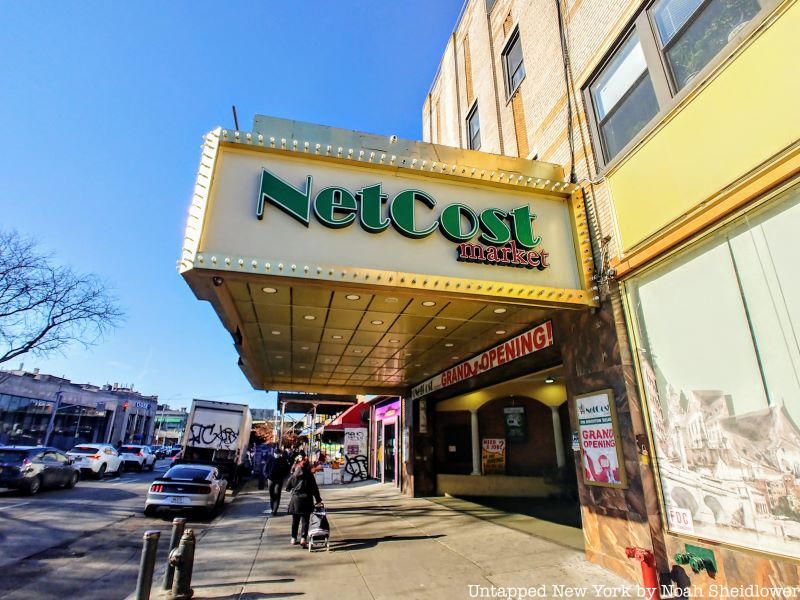
In the southernmost parts of Brooklyn, nestled between Coney Island and Manhattan Beach, one can find New York City‘s very own Little Odessa in Brooklyn’s Brighton Beach. Little Odessa holds one of the highest concentrations of Russian immigrants outside of Russia, as well as large populations of Ukrainians and Central Asians predominantly from Uzbekistan and Kazakhstan. There are also many shops owned and operated by Georgian, Turkish, and Uyghur migrants. This vibrant, beachside enclave was the site of the Russian immigration wave to New York City, which dates back to the 1800s. The area became a haven for many Jewish immigrants around the 1920s, and many Holocaust survivors and Soviet immigrants arrived in the following decades.
Brighton Beach Avenue is the main thoroughfare of Little Odessa, whereas the boardwalk can serve as a lively substitute in warmer weather. If in Little Odessa, be sure to check out Ocean View Cafe, Skovorodka, and Oleandr to get a real taste of Russian-style cuisine and lounging. Shops like Little Georgia and Berikoni Georgian Bakery serve fresh khachapuri, khinkhali dumplings, cold salads, meats, and desserts for cheap. Güllüoglu Baklava and Beyti Turkish Kebab offer a taste of Turkish cooking, while Kashkar Cafe serves up traditional Uyghur food from northwest China. Tashkent Supermarket, named after Uzbekistan’s capital, is one of the most popular stores in the whole area, with tables of hot food options serving dozens of Central Asian dishes. To stock up on Russian and Eastern European products, head to NetCost Market, which is located in an old theater.
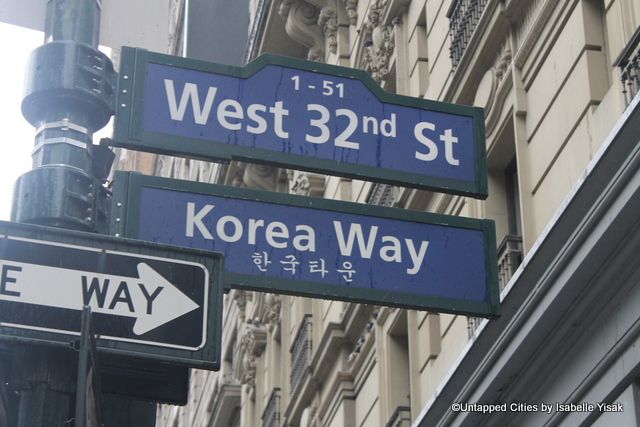
Many are probably familiar with this bustling Korean neighborhood running along West 32nd Street, as it is filled with popular restaurants and bakeries in an area surrounded by famous landmarks. What many do not know is that “K-town” essentially originated with a bookstore called “Koryo Books,” which sold Korean books and merchandise. Its first restaurant was Kom Tang, and along with the bookstore, a few other eateries also helped set the foundation for the neighborhood’s success.
This area experienced a large influx of Korean immigrants in the 1980s; its proximity to the Garment District made it a good location to settle in. The heart of Koreatown – the portion of 32nd street between Fifth and Sixth Avenues – was nicknamed “Korea Way” in 1995 and contains about 100 small businesses. These businesses are karaoke bars, stationery shops, hair salons, and internet cafes. Popular Korean restaurants include Anytime Kitchen, Jongro BBQ, and Woorijip.
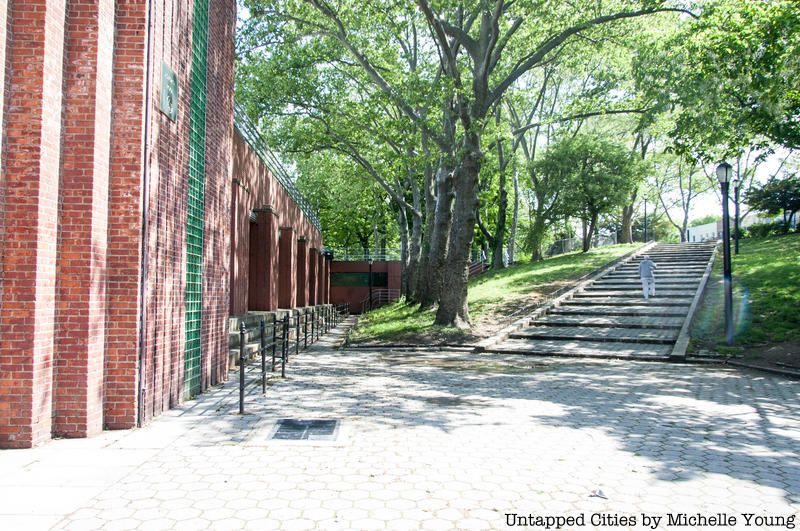
Occupying a rectangular region in Astoria bounded by Ditmars Boulevard, Steinway Street, 36th Avenue, and the East River is a neighborhood filled with traditional Greek taverns, bakeries, cafes, and orthodox churches. Over the years, the Greek presence has shifted from Ditmars Boulevard to Broadway. Large groups of Greeks migrated to the region in the 1960s, with more immigrants arriving from Cyprus in 1974. In 1980, the population of Greeks in Astoria was 22,579, though that number dropped to 18,127 in 1990. The Queens Chronicle previously reported that the Greek debt crisis led to another influx of Greek immigrants to Astoria. The area also has a Maltese population of about 20,000.
Popular traditional Greek eateries in this neighborhood include Taverna Kyclades, Bahari Estiatorio, and the Omonia Cafe. Loukoumi Taverna, one of the highest-rated Greek spots, specializes in saganaki (or dishes prepared in a small frying pan), seafood like Bronzino and black sea bass, and mezedes plates like calf liver or sweetbreads. Seafood is also the star at restaurants including Aliada and Anassa Taverna. Many of these Greek restaurants, markets, and shops are located on Broadway, 30th Avenue, and a handful on Steinway Street. Astoria’s Little Greece is located near another small stretch of Steinway Street called Little Egypt, with plenty of hookah bars, Egyptian restaurants, and a central mosque.
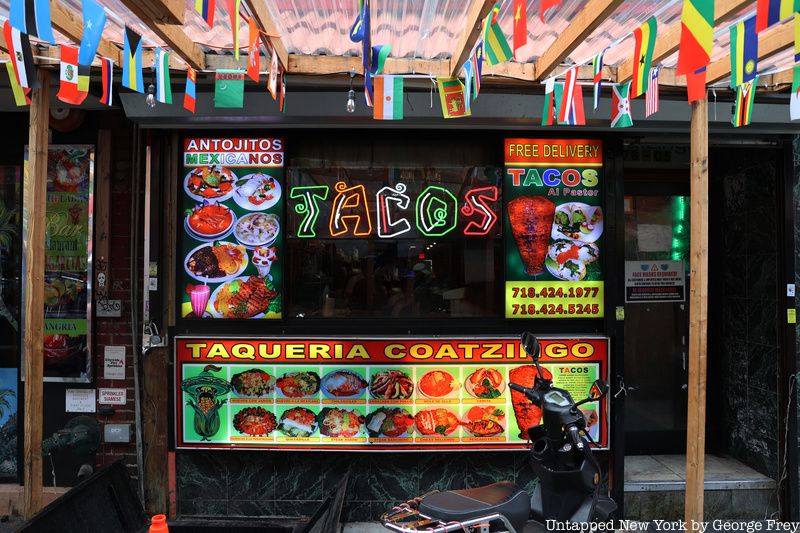
Though Jackson Heights has a significant Indian and Himalayan community, it is also home to a concentrated Colombian population and several Colombian businesses. Roughly running between 80th to 84th streets and between Roosevelt Avenue and 37th Avenue, Little Colombia is a center of Colombian life in Queens, which has the largest Colombian population in the United States. Little Colombia also extends into nearby Corona, which has a Latino majority. Many Colombian families settled in Jackson Heights in the 1950s, particularly middle-class businessmen during a 10-year civil war called La Violencia. The area remained significantly Colombian until other groups moved in during the 1980s, leading many to move to neighboring areas including Elmhurst and College Point.
Though gangs and drug dealers occupied the area in the 1990s, today it is a lively center that celebrates Colombian culture with the sounds of traditional cumbia and salsa music, an “Arepa Lady” food truck, and countless other businesses and restaurants. Near the heart of Little India is Los Arrieros, a Colombian spot serving up sancocho, a traditional stew, and bandeja paisa, a mix of red beans with pork, ground meat, chicharron, fried egg, plantains, and rice. Other notable Colombian spots in Jackson Heights include La Boina Roja Steak House, Raices Colombianas, and Pollos a la Brasa Mario on Roosevelt Avenue or 37th Avenue.
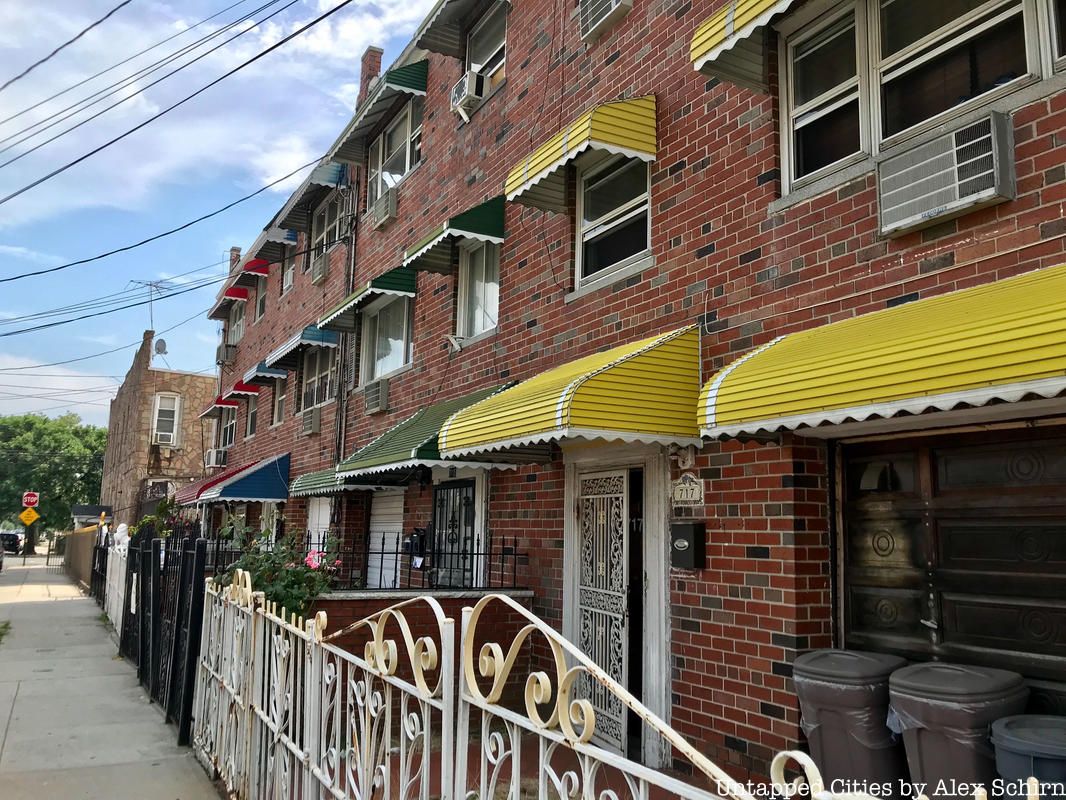
Nestled on a peninsula in the South Bronx near Harding Park is Clason Point, often considered Little Puerto Rico. The neighborhood is about 80% Latino and Hispanic, with Puerto Ricans constituting the largest ethnic group. With narrow streets and small former bungalow houses (there is often very little space between homes located across from each other), this neighborhood is strikingly different from others in the city. There are chickens roaming, small vegetable gardens, and colorful decor. There are also nearby fishing locations and vacant “desert-like” areas.
Many Puerto Ricans moved here in the 1960s, and by the 1990s, people were calling it “Little Puerto Rico.” The area used to be mainly Irish, Italian, and Jewish. Then, a pioneering group of Puerto Ricans and other Latino groups arrived and bought most of the 250 bungalow homes, renovating them and gradually making the area a close-knit community of their own. Though there are few restaurants and shops in Clason Point itself, nearby restaurants in like Brisas del Caribe, Con Sofrito, and Ajo & Oregano serve up dishes like mofongo and pernil.
Though it may seem surprising, the largest Pakistani population in New York City is located on Coney Island Avenue. This area was primarily Jewish (and there is still a large Jewish population in the area) before a large wave of Pakistani migration in the 1990s. The number of Pakistanis in Brooklyn was roughly 9,903 in 2010, though Little Pakistan was almost nonexistent after 9/11. After 9/11, several agencies came into Middle Eastern and South Asian neighborhoods looking for suspicious activities and inciting fear among residents, some of whom could face deportation for small immigration-related problems. As a result of this suspicion and interrogation, business in Little Pakistan dropped by as much as 50%. At the peak of this time, 20,000 members of Brooklyn’s Pakistani population left the United States.
Since then, however, the area has recovered and is now filled with Pakistani restaurants, salons, and jewelry shops. Today, Little Pakistan is mainly concentrated between Church Avenue and Avenue H in Kensington and Flatbush. One of the classic Pakistani spots is Lahori Chilli Restaurant & Sweets, which serves up classics like haleem, a savory porridge, chicken and lamb pulao, and a stew called nihari. Down the street is Jalsa Grill & Gravy, which serves Indian, Pakistani, and Bangladeshi classics. A handful of restaurants offer a selection of savory and sweet goods like jalebi, such as Mashallah, Shandar Sweets & Restaurant, and Abdullah Sweets and Restaurant. There are also a handful of clothing stores that sell items like salwar kameez, kurta, and headpieces
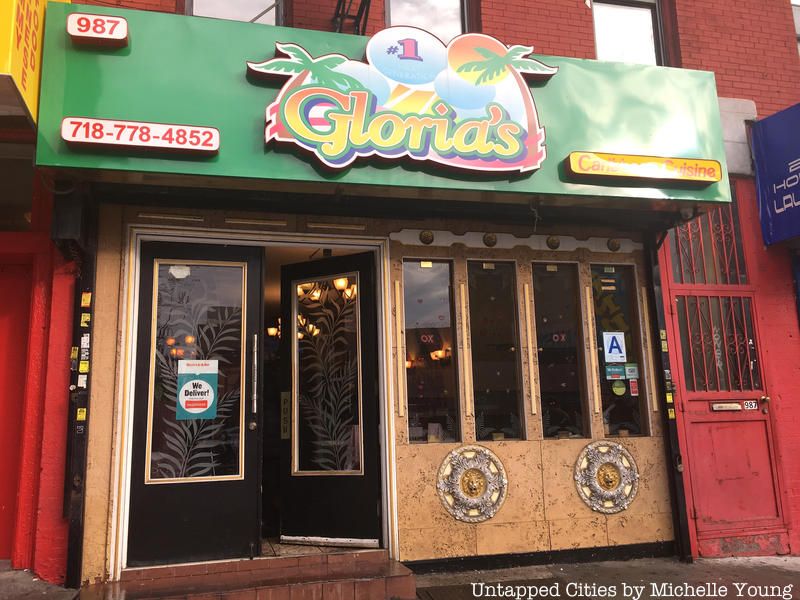
Though gentrification is changing the population of central Brooklyn, there is still a strong community of West Indian and Caribbean residents. Little Caribbean is centered around stretches of Flatbush, Church, Nostrand, and Utica Avenues in the neighborhood of Flatbush. The Little Caribbean name was established in 2017, largely due to the efforts of Shelley Worrell of caribBEING, an initiative that aims to “celebrate and amplify this thriving community where West Indians from the entire region live, work, and play, and to commemorate the history of the Caribbean Diaspora in New York City.” The Caribbean influence stretches into surrounding neighborhoods such as Crown Heights.
Around the 1950s, Italian, Irish, and Jewish communities in Crown Heights began to move out, while Caribbean and West Indian populations moved in. The Black and West Indian community grew with the establishment of public housing after the destruction of Ebbets Field, though this would lead to turbulent race relations. The neighborhood’s West Indian Day Parade, which began in 1964, has been a unifying force for the Caribbean community.
For years, the most famous food joint was likely Gloria’s, seen on Anthony Bourdain’s No Reservations. The restaurant abruptly closed in 2020 after the building was lost in a long-fought legal battle. The spot specialized in Trinidadian and Caribbean cuisines with roti, oxtail stew, and callaloo. Former staff at Gloria’s opened their own Caribbean spot called Gee’s with a similar menu. On St. John’s Place is Jemz, a sit-down restaurant known for jerk chicken, escovitch snapper, and curry goat. Also popular are Cas West Indian & American Restaurant, Trinidad Golden Palace Restaurant, and Ali’s Original Roti Shop. Markets and shops sell products from countries including Guyana, Suriname, Belize, and French Guiana as well.

Home to about 5,000 Sri Lankans and restaurants serving traditional roti, dosas, and Sri Lankan crepes and stews, Little Sri Lanka is a little-known cultural gem that is also perhaps the most popular home for Sri Lankans other than Sri Lanka itself. About a fifteen-minute walk from the Staten Island ferry, Little Sri Lanka lies in the areas of Tompkinsville and Stapleton along Victory Boulevard and Bay Street. Sri Lankans arrived in the United States starting in the 1950s and 1960s. However, why they came to Staten Island is a bit of a mystery. After Lyndon B. Johnson signed the Immigration and Nationality Act of 1965, Sri Lankan families arrived in the late 1960s. The first families were attracted to the island due to its quiet and calm nature as well as its affordability and access to downtown Manhattan.
The Sri Lankan population in the neighborhood has increased rapidly in recent years while keeping connections to their home country. The community has celebrated New Year in Ocean Breeze with traditional Sri Lankan festivities, and in 2014 they collaborated to send aid to Sri Lanka in wake of a tsunami. The Sri Lankan Art and Cultural Museum opened in 2017, featuring Sri Lankan art, Buddha statues, gemstones, and even ceremonial weapons. The four-table eatery New Asha, which opened in 2000 in Tompkinsville, was one of the first Sri Lanka eateries in the United States. The menu features a selection of appetizers like fish roti, curried fish wrapped in a soft flatbread, dhal vadal, a type of deep-fried lentil, and hoppers, bowl-shaped pancakes made from fermented rice flour and coconut milk. Lakruwana, which offers a weekend lunch buffet, includes a menu of devilled chicken, black pork curry, dal, pineapple curry, and crispy pappadam, as well as various desserts like gooseberry mousse and sago pudding. Other notable restaurants include Ceylon Curry, Sagara Restaurant, and Dosa Garden, as well as New York Lanka Grocery.
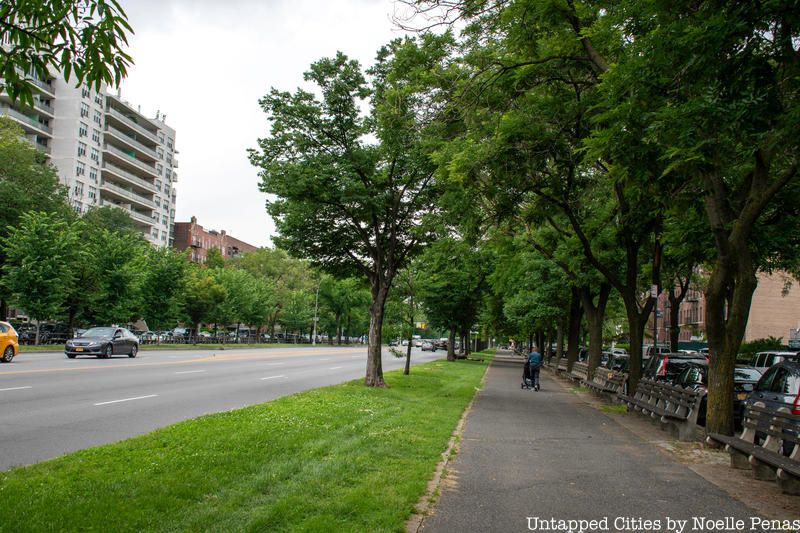
Little Haiti in Flatbush has been perhaps one of the fastest-growing ethnic enclaves in New York City. Flatbush, which like much of Brooklyn had been predominantly Italian, Irish, and Jewish, has over the years attracted a diverse array of nationalities particularly from the Caribbean, as well as from South Asia. Today, Haitians constitute the largest ethnic group in Flatbush, amounting to over 20% of the neighborhood’s foreign-born population. Many Haitians came to the United States starting with the U.S. occupation of Haiti and continuing during the Duvalier dynasty characterized by an autocratic family dictatorship. Thousands found refuge in Flatbush after the 2010 earthquake that ravaged the country, according to Little Haiti’s website.
Flatbush hosts a handful of popular Haitian eateries including Zanmi, an upscale spot serving dishes like Kreyol scallops, grilled goat, Voodoo pasta, and duck in Creole sauce. La Baguette Shop is a notable Flatbush bakery with Haitian baked goods like codfish and beef patties. YOYO Fritaille, with its large buffet table, is known for its assortment of fried food like griot, or fried pork shoulder with citrus. Other Haitian restaurants in the neighborhood include Taste of the City Fresh Grill, Island Express, and Bebe Fritay. The Little Haiti Cultural & Business District has worked to support local stores and cultural centers on and around Flatbush Avenue.
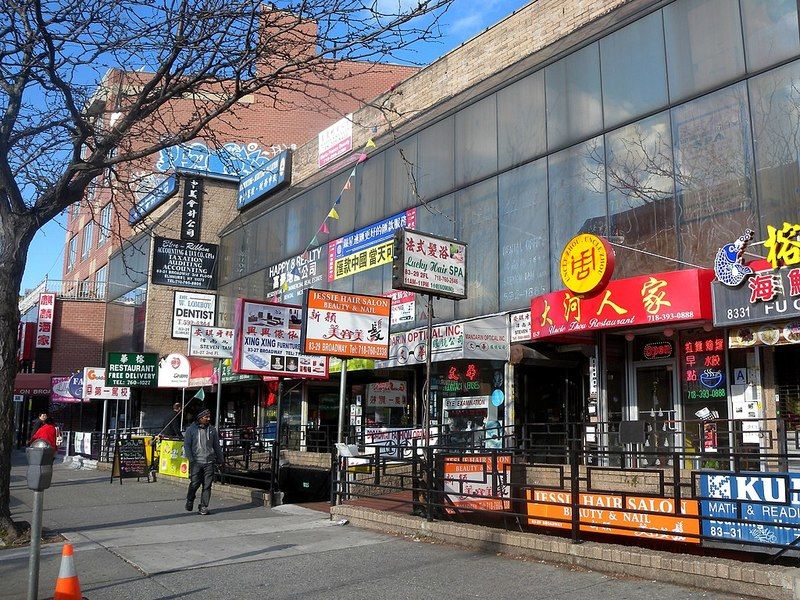
Elmhurst may be most commonly referred to as one of Queens’ Little Chinatowns, with dozens of Chinese eateries scattered along or near Broadway. Elmhurst is commonly considered the second-largest epicenter of Chinese life in Queens outside of Flushing. However, nestled between the area’s Chinese eateries are two small ethnic enclaves: Little Thailand and Little Indonesia. Just last year, New York officially recognized “Little Thailand” as the stretch between 76th and 79th Streets on Woodside Avenue. One of the newer spots in the neighborhood is Saranrom, a Michelin Bib Gourmet restaurant offering authentic dishes like bone-in catfish with a spicy paste, crispy mussel pancakes, many variants of papaya salad, and basil minced beef. Ayada Thai is a classic family-owned restaurant with another location at Chelsea Market known for duck panang curry and its many noodle dishes. Eim Khao Mun Kai is known for its poached chicken, while Khao Kang serves up rice with two or three entrees from its buffet table.
Though small, Elmhurst also houses an unofficial Little Indonesia near Queens Boulevard. Many Indonesians from different ethnic groups came to New York in the late 1990s due to religious and ethnic conflicts at the end of Suharto’s reign. The Indonesian population is said to be around 5,000 in New York City, with another few thousand on Long Island and in New Jersey. One of the first Indonesian stores to open for the neighborhood’s residents is Indo Java, a small grocery that once a week serves up dishes like beef meatballs with noodles, salted squid with jalapenos, and beef rendang in a coconut stew. Sky Cafe is another popular Indonesian spot known for classics like nasi goreng, a rice dish with various meats and vegetables, and fried chicken with shrimp paste and tamarind soup. Other notable restaurants include Awang Kitchen and Asian Taste 86. Elmhurst has also put on a weekly Indonesian Food Bazaar featuring all sorts of Indonesian classics from a variety of vendors.
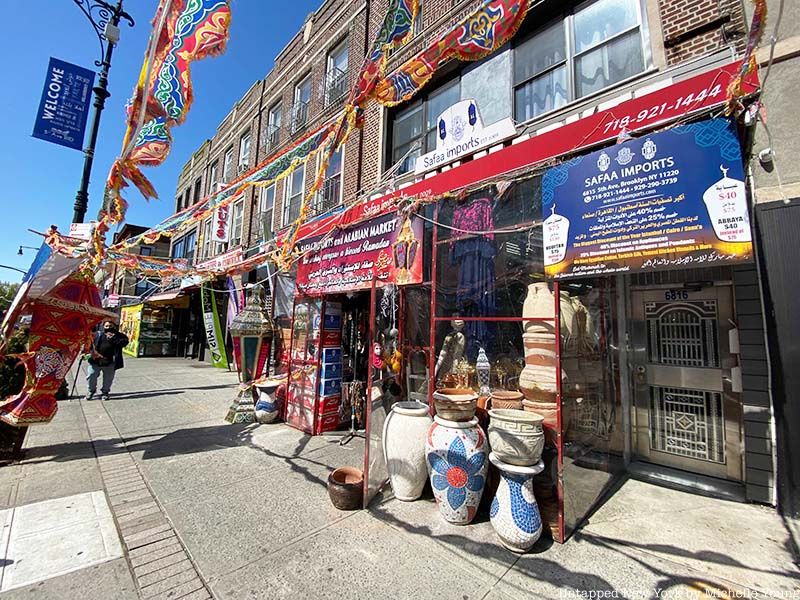
In Bay Ridge, the scent of cinnamon and cardamom wafts out into the streets, which are lined with Yemeni and Palestinian restaurants and shops selling traditional clothing and manufactured goods. The neighborhood is home to a rapidly growing community of Arab residents who have nicknamed the neighborhood “Little Palestine” and “Little Yemen.” Some residents are descendants of Syrian migrants who fled the Ottoman Empire in the late 1800s, though most immigrants from the Middle East started coming in the 1960s and ’70s, followed by thousands over the past few years escaping conflict and unrest. Prior to the 1970s, the community was heavily populated by Italians, Greeks, and Norwegians. Along 5th Avenue, the main stretch of the Arab community, one block contains plenty of signs in Arabic, though the next is filled with bars and Italian restaurants.
Al-Aqsa Bakery & Restaurant is a popular Palestinian spot, located beneath the second-floor Beit Jeddo Cafe, a hookah lounge. Locals also frequent the nearby El-Zahra Halal Meat & Restaurant for fresh poultry and lamb. Perhaps the most famous spot in the neighborhood is Yemen Cafe, with has a second location in Cobble Hill, serving up dishes like salta and kabsa with plenty of chicken and lamb options. Nablus Sweets, named after the city in the West Bank, offers desserts like balloria, a sweet similar to baklava with pistachios or cashews, rose water, and syrup, as well as date-filled cookies. Other options include Alsalam Restaurant, Al-Sada Yemeni Restaurant, and Halal takeout spot China Pagoda. Interspersed between these restaurants are clothing stores, kitchen appliance shops, and cultural centers, including the Yemeni American Merchants Association and the Arab American Association of New York.
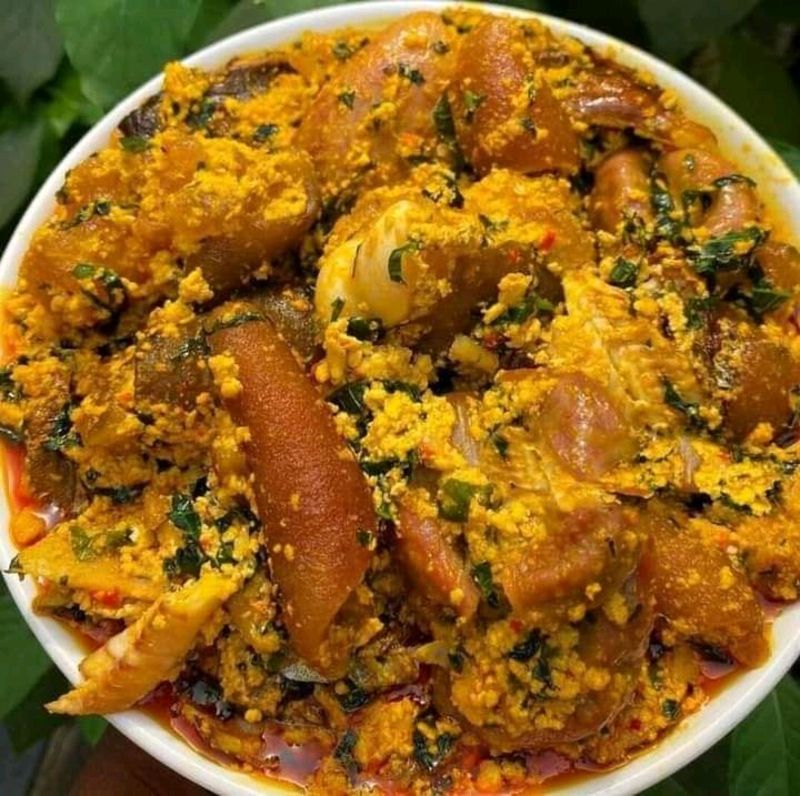
The Bronx is home to a handful of African enclaves throughout the borough, particularly populated with people from West Africa. One of the most prominent of these enclaves is Little Accra, located around 167th Street and named for the capital of Ghana. Many Ghanaians came to the Bronx in the 1980s and 1990s during the military regime of Jerry Rawlings, defined in part by harsh economic and political conditions. A majority of Ghanaians in the Bronx have entered the healthcare field as home aides, nurses, and doctors.
With two locations in Concourse and Fordham, Papaye is one of the most recognizable Ghanaian spots in the Bronx. The restaurant is known for its jollof rice, goat or fish stew with rice and beans called waakye, and fufu with chicken or fried fish in a palm nut or peanut soup. Accra in nearby Morris Heights is another staple of the Bronx’s Ghanaian food scene, serving up a similar menu with dishes like goat in okra stew, egusi soup, tilapia with garri, and smoked spiced meat called suya. The area around 167th Street is lined with barbershops, hair salons, and markets, such as Adum African Market and Wholesale, owned by and catering to the Ghanaian population.

Home to authentic Filipino restaurants and businesses, “Little Manila,” which runs from 63rd to 71st Street in Woodside, has made Filipino immigrants feel at home. New York State’s Filipino population numbers about 200,000, and the majority of these Filipinos live in Queens (50,000 to 70,000 live in Woodside). After the passage of the 1965 Immigration and Nationality Act, Filipino medical professionals moved to Woodside, many working at nearby Elmhurst Hospital, and most Filipinos felt welcome since the area had been predominantly Irish Catholic at the time.
One orienting point in this neighborhood is the bee that greets customers outside the Filipino fast food chain, Jollibee. Though there are over 500 of these chains worldwide, Little Manila’s Jollibee, established in 2009, was the first on the East Coast. Red Ribbon, a Filipino chain bakery, also found its place here in 2010. Other restaurants include Ihawan, famous for its traditional barbeque and Renee’s Kitchenette which sells traditional Filipino dishes. One of the most popular stores in the neighborhood is Phil-Am Food Mart, which features everything from ube desserts to Filipino meats and dishes like lumpia (spring rolls) and balut (fertilized duck egg). There is also a Philippine National Bank, a Filipino recreational center, and Filipino salons and grocery stores.
This article was co-written by Stephanie Geier, Brennan Ortiz, and Billy Hagberg. This article has been edited and updated by Noah Sheidlower.
Next, check out the Absolute Best Restaurants in Jackson Heights.
Subscribe to our newsletter